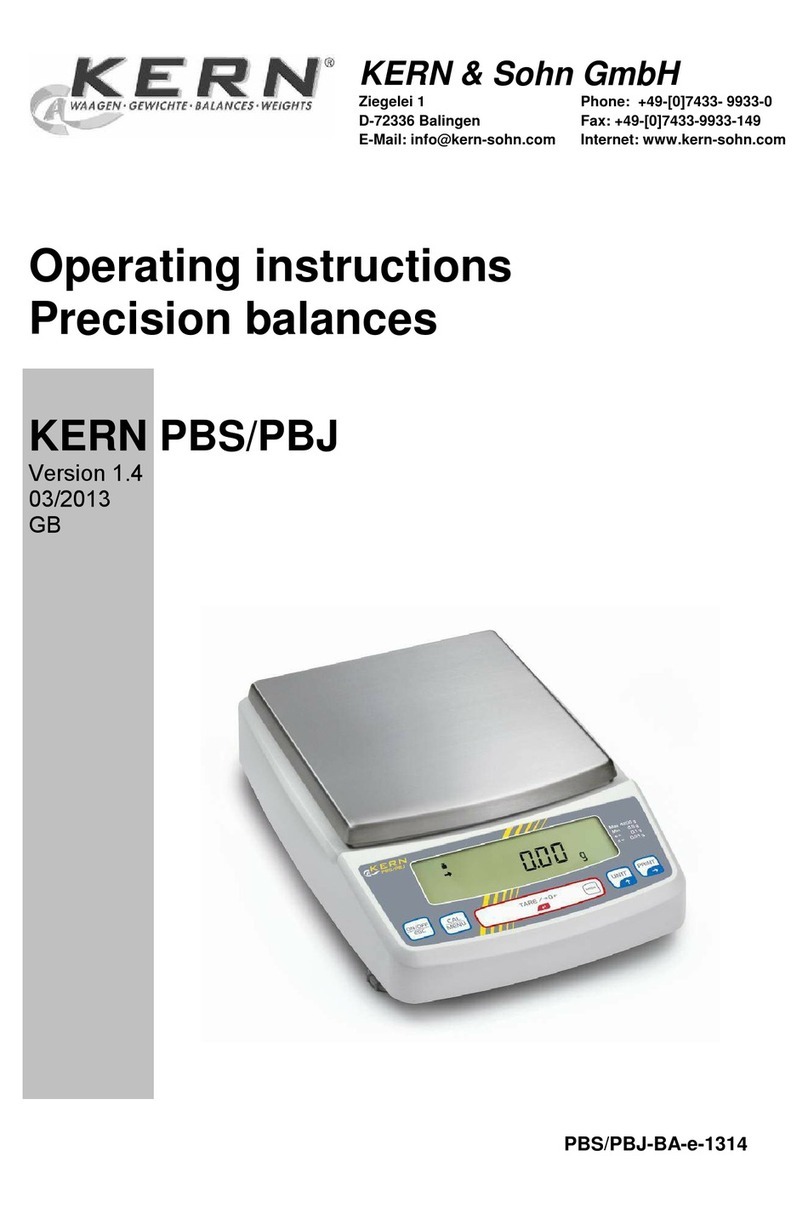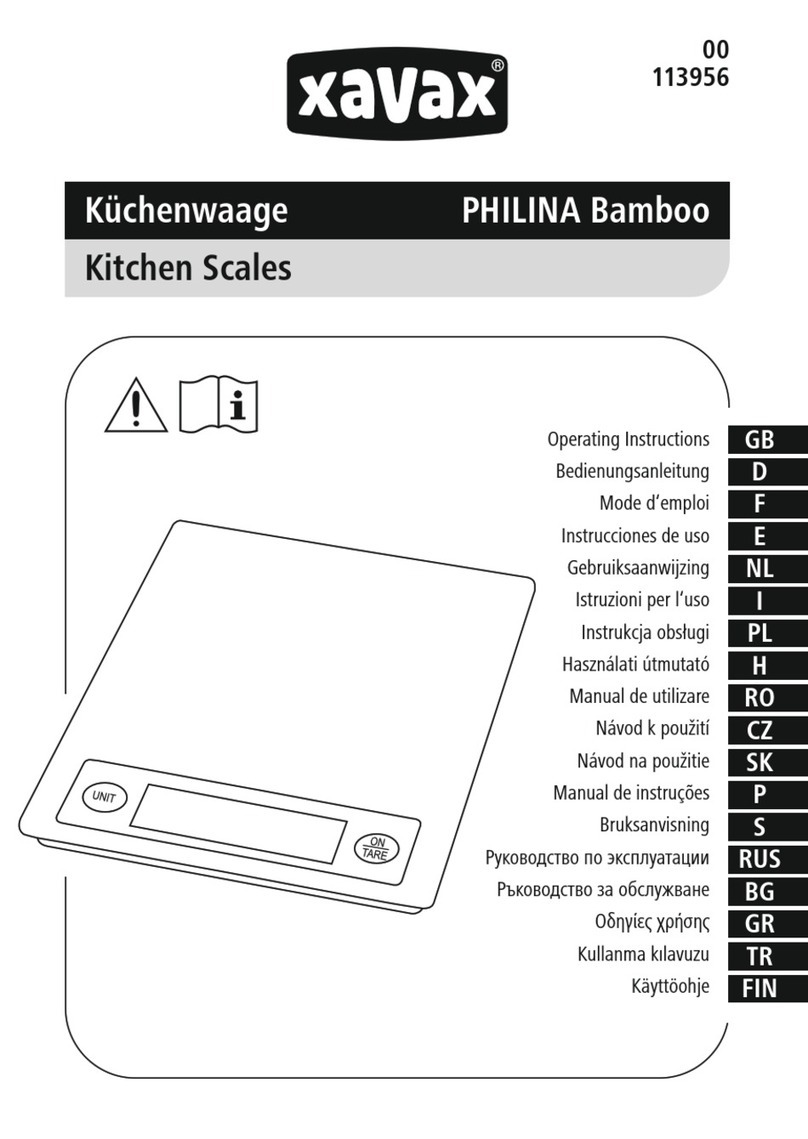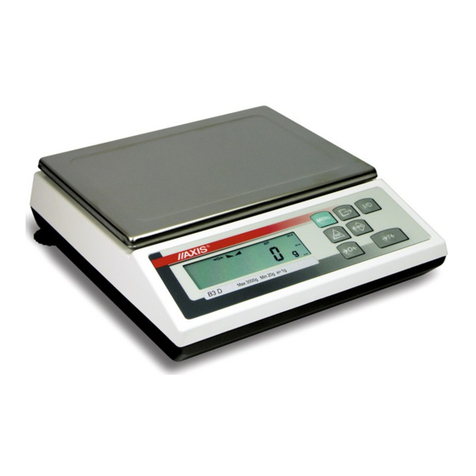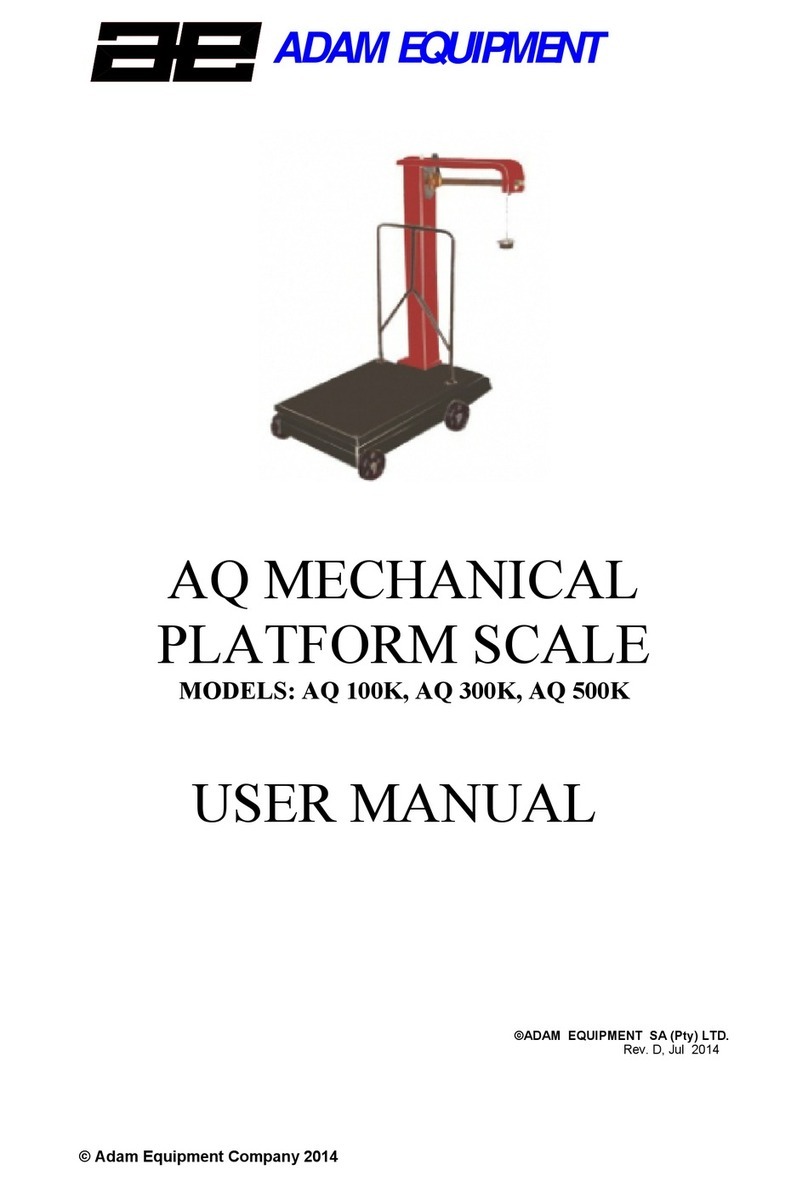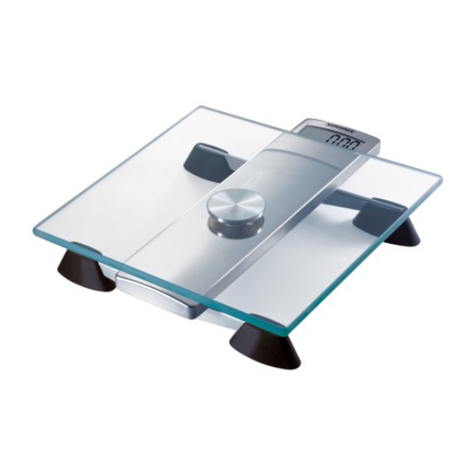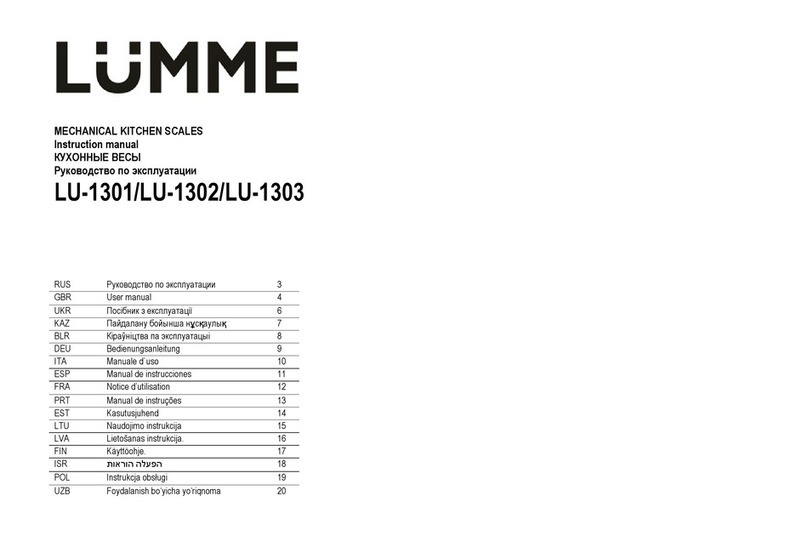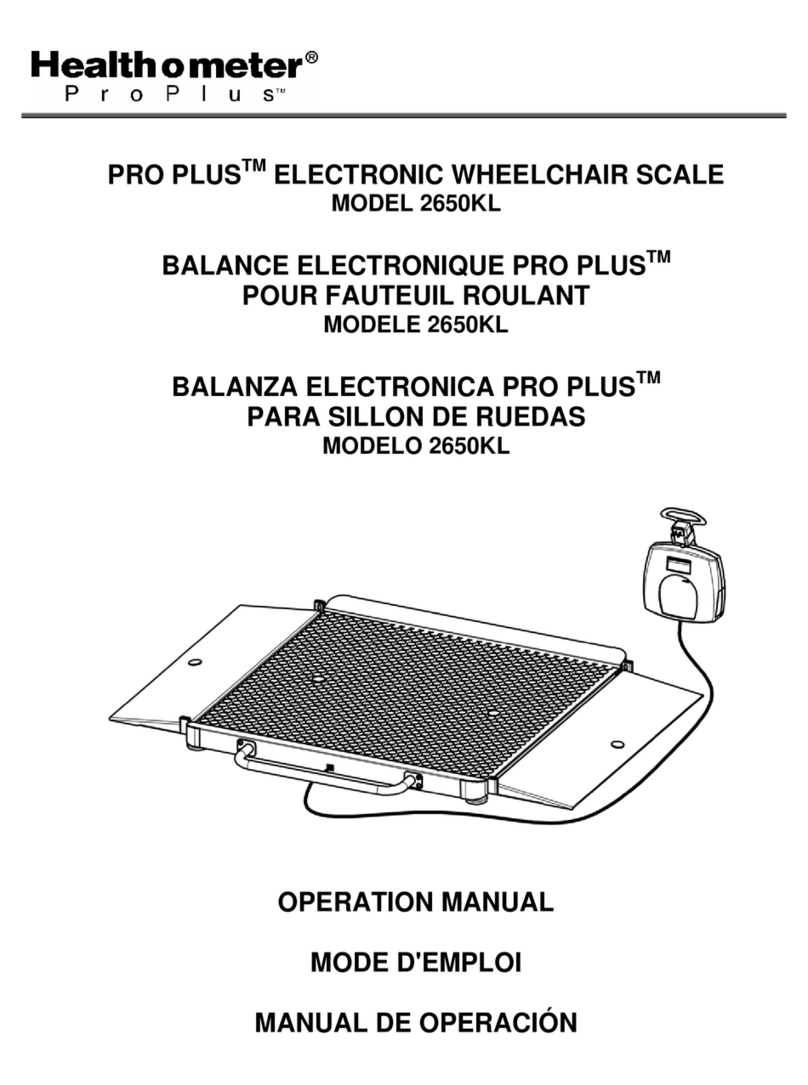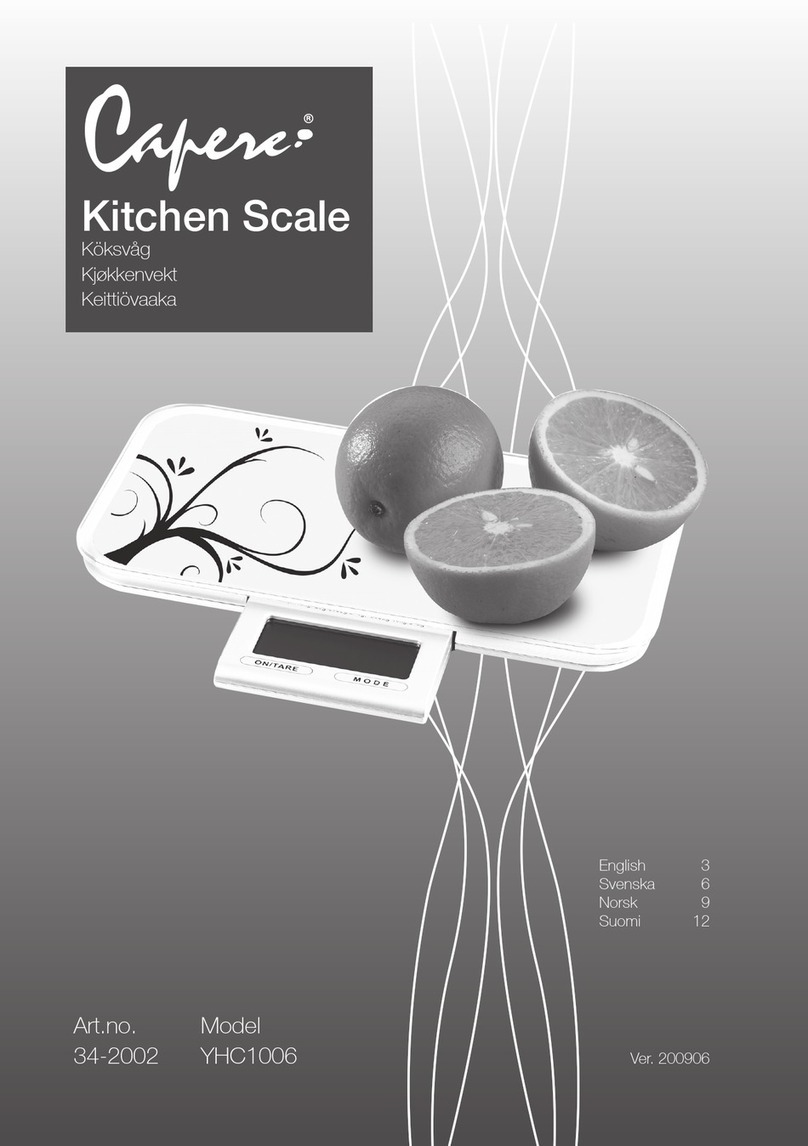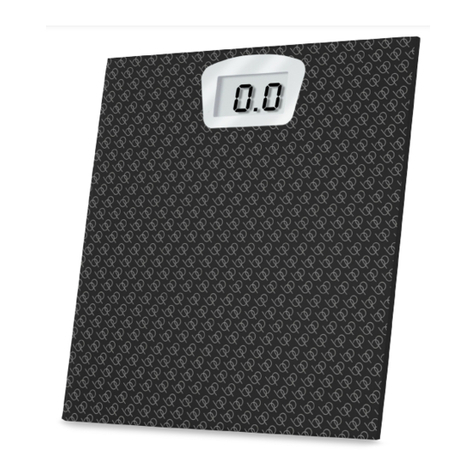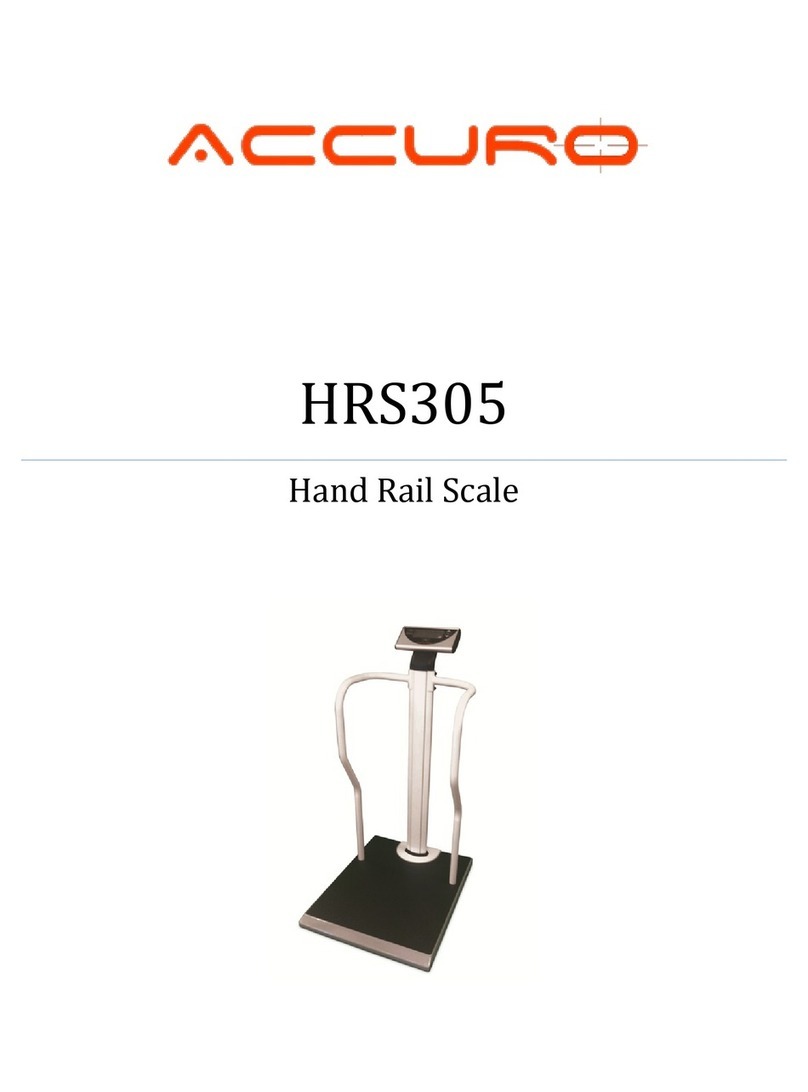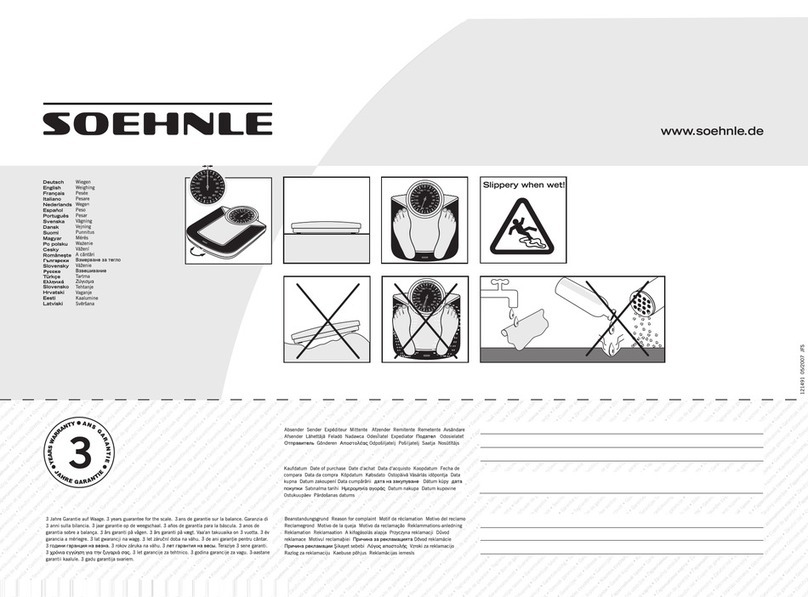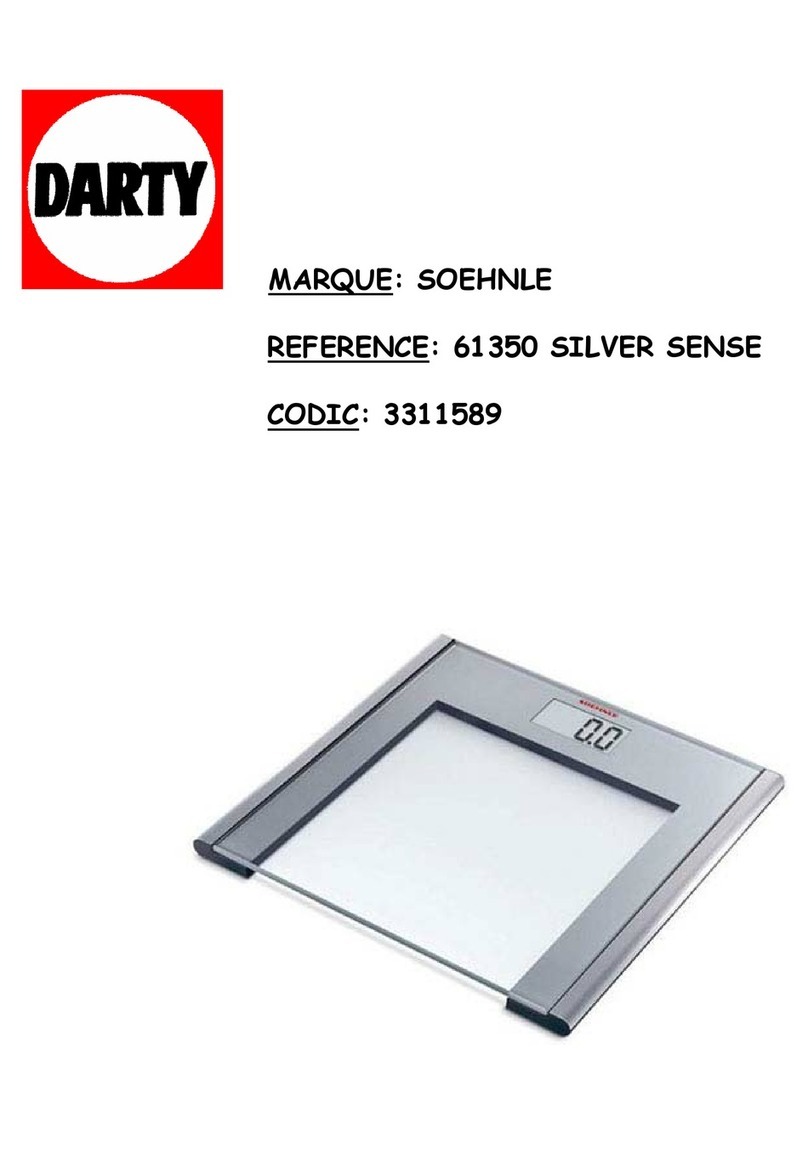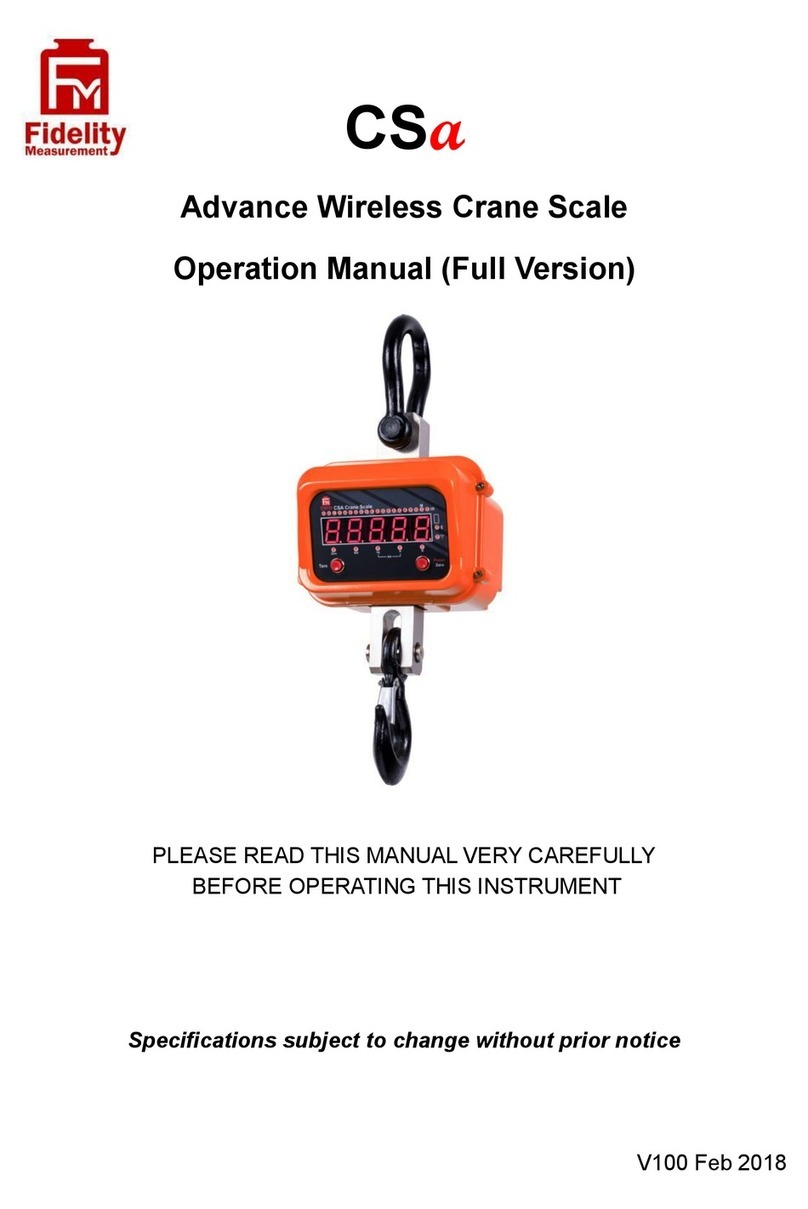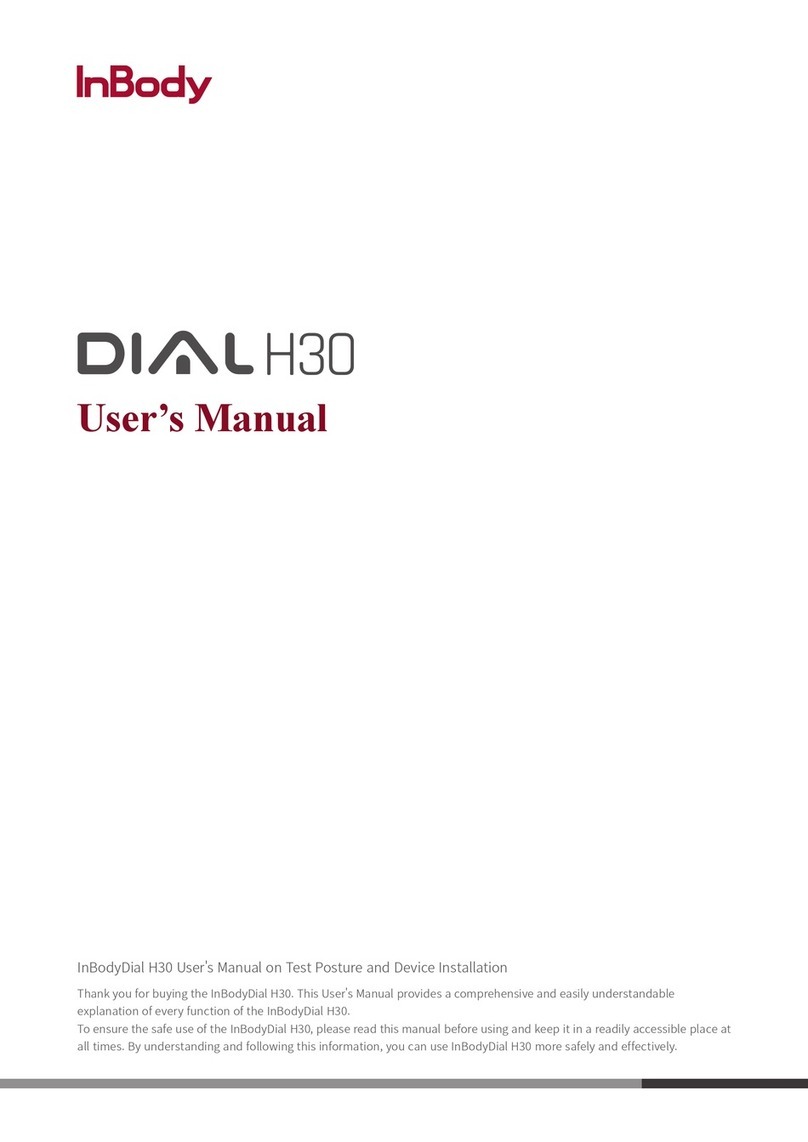Shinko Denshi CT603 User manual

200065M21
H i g h - P r e c i s i o n T u n i n g F o r k C a r a t B a l a n c e
CT Series
Operation Manual
SHINKO DENSHI CO., LTD.
IMPORTANT
To ensure safe and proper use of the balance, please read this
manual carefully.
After reading this manual, store it in a safe place near the balance, so
you can review it as needed.


PREFACE
Thank you for purchasing an CT Series electronic balance. This is a precision instrument equipped
with exacting mechanisms in a compact body. The balance is easy to operate and features
user-friendly keys. Furthermore, the large liquid-crystal display provides excellent visibility, and the
instrument’s high speed and stability−intrinsic to a tuning fork design
−
help boost operational efficiency.
Before using the balance, please check that the following items have been included in the
package.
Should you find any missing parts, please contact your local dealer.
(1) Main unit of balance
(2) Measurement pan
(3) Windshield ring
(4) Pan base
(5) Windshield
(6) AC adapter (one)
(7) DIN5P plug set
(8) Operation manual
High-PrecisionTuningFork
CaratBalance
CT-ESeries
OperationMa
nual
200012M01

1
CONTENTS
1. Precautions on the Use
1.1 Warnings regarding Use ················································ 2
1.2 For More Precise Measurements ···································· 5
2. Names of Component Parts
2.1 Main Unit ··································································· 8
2.2 LCD Indicators and Operating Keys ································· 9
3. Basic Operations
3.1 Installation ·································································· 11
3.2 Operation Check ························································· 12
3.3 Operation for Tare Subtraction ········································ 13
4. Functions
4.1 Setup and Checking of Functions ···································· 15
4.2 Description of Functions ················································ 16
4.3 Interface Section ························································ 17
5. Switching Function for Units of Measurement ······················· 18
6. Calibrating the Balance ······················································ 20
7. Input/output functions
7.1 Terminal Numbers and Functions ···································· 22
7.2 Connection between Balances and Personal Computers········ 23
7.3 Interface Specifications ················································· 24
7.4 Output Data ································································ 24
7.5 Input Commands ························································· 26
8. Operating the Balance with the Battery ································ 28
9. Removing the Windshield·························································29
10. Troubleshooting ································································· 30
11. Specifications
11.1 Basic Specifications ···················································· 31
11.2 Common Specifications ··············································· 31
11.3 Minimum Display by Unit of Measurement ······················· 31
12. Conversion Table of Units ················································· 32

2
1. Precautions on the Use
1.1 Warnings regarding Use
•This Section "Precautions Relating to Use" sets forth precautionary notes that the user should
observe in order to prevent physical injury to the user and/or damage to property.
① The nature of problems that may result in the event of improper operation, and consequential effects
on the quality and performance of the balance, are indicated under the two categories of "Caution"
and "Recommended," and explained using symbols.
注 意
!
CAUTION
This symbol indicates a risk of injury or property damage if the
balance is used improperly. Be sure to observe these notes to
ensure safe use of the balance as the improper use may cause
serious results.
RECOMMENDED
This term indicates steps that the user should take to ensure the
quality and reliability of the balance.
Meanings of Symbols
Each symbol is accompanied by an instruction.
強制記号
Mandatory
Symbol:
Indicates a “mandatory” action that should be executed
without fail.
水平確認
Check Level
禁止記号
Prohibitive
Symbol:
Indicates a "prohibited" action that must not be
executed.
使用禁止
Do not Use
注 意
!
CAUTION
分解禁止
Do Not
Disassemble
Do not disassemble or modify the unit.
•Could cause malfunction or heat generation
•Contact our local dealer.
定格外禁止
Do Not
Deviate from
Ratings
Only AC power (rated value) should be used.
Only use the dedicated AC adapter.
•Use of other types of power or adapters may
result in heat generation or malfunction of the
balance.
移動禁止
Do Not Move
Do not move the balance when a sample is
loaded.
•The loaded sample may fall off the
measurement pan and cause an injury.

3
定格外禁止
Do Not Use
Do not place the balance on an unstable base
or use the balance in a location where it may
be subjected to shock.
•The loaded sample may fall off the
measurement pan.
•
Accurate measurement may be rendered
impossible.
定格外禁止
Do Not Drop
Do not lay the AC adapter cable on the
surface of the passage.
•Somebody may trip on the cable, causing the
balance to fall off, thereby causing injury
and/or damage to the balance.
定格外禁止
Do not
Handle
with Wet Hands
Do not touch the AC adapter or balance with
wet hands.
•Danger of electric shock
定格外禁止
Keep Dry
Do not use the balance in a location were it
may be subjected to excess moisture.
•Electric shock or short-circuiting could occur.
•
The balance may be corroded, with resultant
malfunction.
定格外禁止
Do Not Leave
Afloat
Do not use the balance with its adjusters
lifted.
•
The balance will become unstable, preventing
accurate measurement.
定格外禁止
Avoid Dust
Do not use the balance in a location where it
may be subjected to excess dust.
•Risk of explosion or fire
•
Short-circuit or lack of continuity may occur,
leading to a malfunction of the balance.
Calibrate
Balance
Calibrate the balance after installation or
relocation.
•Measurement values may contain errors,
preventing accurate measurement from being
conducted.
RECOMMENDED

4
定格外禁止
Do Not Apply
Force
Avoid applying excess force or impact to the
balance.
•Place the sample to be measured on the
balance carefully to prevent breakage or
malfunction.
定格外禁止
Do Not Use
Do not use the balance in a location were it
may be subjected to abrupt changes in
ambient temperature or humidity.
•Accurate measurement may not be obtained.
•Optimum operations occur when ambient
temperatures range from 0°C to 40°C, and less
than 80% relative humidity.
定格外禁止
Do Not
Overload
Do not use the balance when [
o-Err
]
(Overloaded) is displayed.
•Take down the loaded sample immediately to
prevent breakage or malfunction.
定格外禁止
Do Not Use
Do not use the balance in a location where it
is subject to direct sunlight.
•The indications would be illegible.
•
An internal temperature increase in the
balance may lead to inaccurate measurement.
Unplug
Adapter
If the balance is to be unused for an extended
period of time, unplug the adapter.
•
This conserves power and prevents
deterioration.
定格外禁止
Do Not Use
Do not use volatile solvents for cleaning.
•The body may be distorted.
•
To clean the unit of stains, use a piece of dry
cloth or cloth soaked in a small quantity of
neutral detergent.
定格外禁止
Do Not Use
Do not use the balance in a location where it
may be subject to air from an
air-conditioning unit.
•Extreme changes in the ambient temperature
may result in inaccurate measurements.
定格外禁止
Do Not Use
Do not use the balance on a soft floor.
•When loaded with a sample, the balance may tip
or move, preventing accurate measurements
from being conducted.
Check Level
Do not use the balance when it is tilted.
An inclined balance is likely to produce
errors, preventing accurate measurements
from being conducted. Place the balance
on a level surface.

5
1.2 For More Precise Measurements
To be able to conduct more precise measurements, it is necessary to minimize the factors that contribute
to measurement errors. There are a great variety of such error-inducting factors, which can be linked to
machine error and performance of the balance itself, as well as the properties and condition of samples
being measured, and the measuring environment (e.g., vibration, temperature/humidity). These factors
can readily affect the results of measurement on a balance that has high resolution readability.
This material includes some precautionary notes that the user should bear in mind to eliminate
error factors and ensure accurate measurement results.
1-2-1 Precautions on the Measuring Room
Temperature /
Humidity →Try to maintain constant room temperature as much as possible to
prevent dew condensation and unstable indications due to
fluctuations in temperature.
→Low relative humidity tends to induce static electricity,causing
measurement error. (Relative humidity of about 60% is considered
ideal.)
Vibration/
Shaking →The measuring room should preferably be located on the ground
floor or in the basement. Higher floors are more susceptible to
heavy vibration and shaking, which make such locations less
suitable for measurement. A room facing a railway or road with
heavy traffic should also be avoided as much as practicable.
Drafts →Avoid choosing a location subject to a direct draft of airflow from an
air-conditioning unit or exposed to direct sunlight, which may cause
unstable reading due to abrupt fluctuations in temperature.
Also avoid a room subject to a heavy flow of people, since
fluctuations in drafts and temperature are likely to occur in such a
location.
Gravity →The gravity acting on a sample varies depending on the latitude or
height of the location where measurement is being conducted. For
this reason, the same sample may show different weight indications
from one place to another.
Therefore, make it a rule to calibrate the balance every time it is
relocated.
Electromagnetic
Waves →When the balance is located near an object that generates intense
electromagnetic waves, it may be hindered from showing accurate
weight due to the effects of such waves. Therefore, avoid placing
the balance in such a location.

6
1-2-2 Precautions on the Measuring Bench
Vibration/
Shaking →If the balance is subjected to vibration during measurement, its indications will
become unstable, thus preventing accurate measurement from being
conducted. To avoid this situation, select a solid measuring bench that is
less susceptible to vibration. (A bench in a vibration-proof structure or one
made of concrete or stonework will be suitable.) Moreover, do not conduct
measurement with a soft cloth or paper placed under the balance, since the
balance may be rocked out of its precise level positioning.
→Place the measuring bench in a location free from vibration as much as
possible. It is a good idea to install the measuring bench in a corner of the
measuring room, where less vibration is likely to occur than in the center of
the room.
Magnetism/
Static
Electricity
→Avoid operating the balance on a bench that is susceptible to the effects of
magnetism or static electricity.
1-2-3 Precautions on the Samples
Static
Electricity →Generally speaking, objects made of synthetic resin and glass has high
electric insulating properties and, therefore, are apt to be electrically
charged. Measuring a charged sample as is may cause unstable
indications, with resultant poor reproducibility of the results. With this in
mind, be sure to discharge charged samples before measurement.
Magnetism →A sample affected by magnetism indicates different weight values
depending on where it is located on the measuring pan, along with
resultant poor reproducibility of the results.
When a magnetized sample must be measured, first demagnetize it or
place an appropriate pedestal on the measuring pan to adequately
separate the mechanism part of the balance from the magnetized sample
for avoiding the effects of magnetism.
Absorption/
Evaporation
of Moisture
→Measuring a sample with moisture absorbed or evaporated (volatized)
continuously increases or decreases the values indicated. In such case,
measure the sample in a container with a small opening and sealed
airtight with a cap.
Sample
Temperature
→A difference in temperature between a sample and the interior of a
windshield may cause convection to occur inside the windshield, resulting
in erroneous measurement. Therefore, measure a very hot or cold
sample only after allowing time for its temperature to acclimatize to room
temperature. Moreover, to prevent convection inside the windshield,
allow time for the interior of the windshield to acclimatize to room
temperature.
→The body heat of a person conducting measurement can also affect
measurement results. Avoid holding the sample with bare hands, and
use long tweezers or a similar tool instead. Also refrain from putting your
hands inside the windshield while measurement is in progress.

7
1-2-4 Precautions on the Main Unit of the Balance
Precautions
on Use →A transparent dust cover, supplied for some models, may be statically
charged under low humidity conditions, which may cause unstable
readinig. In such case, wipe the dust cover with a damp cloth or use a
commercial antistatic agent. Otherwise, simply operate the balance with
the dust cover removed.
→
For more stable measurement, it is recommended to have 30 minutes
warm up time after power-up, and apply a load equivalent to the weighing
capacity several times before conducting actual measurement operation.
Calibration →
Periodically calibrate the balance with an internal or external calibration
weight to ensure accurate measurement at all times.
→
For more precise calibration, use an external calibration weight that
approximates the weighing capacity. Moreover, calibrate the balance
only after enough warm up time and loading near capacity weight.
→Calibration is also required in the following cases:
When operating the balance for the first time,
When not using the balance for a long time,
When relocating the balance, or
When there is wide fluctuation in temperature, humidity or atmospheric
pressure.
Maintenance
→
When the measuring pan or pan base is contaminated with powder or
liquid, erroneous weight values may result or indications may remain
unstable. Therefore, be sure to frequently clean the balance. When
cleaning the balance, be very careful not to allow dirt or liquid to penetrate
inside (the mechanism part).

8
2. Names of Component Parts
2.1 Main Unit
Operation keys
See page 6.
Level
For checking
the level of the
balance
Turn the adjusters
until the bubble
rests in the center
of the red circle.
Adjusters
Total of two, one on either side of
the unit’s front
AC adapter connector
Measurement pan
Liquid-crystal
display (LCD)
See page 6.
RS232C connector
Windshield
Front View
Rear view

9
2.2 LCD Indicators and Operating Keys
2.2.1 Symbols Displayed
Display Description
(ct)carat
g(g)gram
(oz)ounce
(lb)pound
(ozt)troy ounce
(dwt)penny weight
(Lower right) (Lower right)grain
(tl)tael(Hong Kong)
(Upper right)
(tl Upper right)tael(Singapore,Malaysia)
(Lower right)
(tl Lower right)tael(Taiwan)
mom (mom)momme
(to)tola
→0←Zero point
○Indication of stable balance (If the light is off, the balance is unstable.)
*Balance powered up (Lights up when the power is turned off) or data
transmitted
M Display of set values from memory (If a value is flashing, it is being saved.)
CAL Stays on and flashes while span adjustment is in progress.
Bar graph
Lights up when the balance is battery-operated. The indication changes to
[ ] when the battery capacity decreases and charging is required
.
(See “8. Operating the Balance on the Battery” on page 25.)
0 F

10
2.2.2 Names and Functions of Operating Keys
Operating Key Function
On/off key Key to turn on/off the unit power
Print key [Brief press] initiates print or output.
Set key [Brief press] sets function
Function key
[Brief press] toggle-switches the units to be displayed in
succession (ct,g, etc.).
[Brief press] selects an item when setting the function.
[Continuous press] invokes various functions.
[Longer continuous press] invokes span adjustment.
Zero/Tare key
[Brief press] resets the indication to zero when using
zero-point setup or tare subtraction.
[Brief press] selects a function when operating the
balance in the function mode.

11
3. Basic Operations
3.1 Installation
1 Installation of the windshield and the weighing pan
Refer to "Windshield Assembling"
attached in the box.
First, mount the pan base on the
main unit of the balance and place
the measurement pan on top of it.
Be sure to mount the pan base in
the correct direction, as illustrated
below.
2 Securing the exact level of the balance Turn the adjusters until the bubble
rests in the center of the red circle
on the level. The adjuster is
located on either side at front.
3 Connecting the AC adapter
Connect the AC adapter to the
balance, as illustrated at left.
<Caution>
If the balance has the battery
installed, refer to “8. Operating the
Balance with the Battery,” on page
25.
Position of air bubble
in the level

12
3.2 Operation Check
1 Turning on the power
When the balance has the AC
adapter connected, it displays [*].
Pressing the On/Off key
The display section lights up, and
the balance is ready for operation.
2 Checking the display
Check to see if the display has any
missing indications or unlit parts.
A few seconds after startup, the
indication is reset to zero.
3 Switching the measurement mode
Press the Function key.
Each time the key is pressed, the
unit of measurement changes, as
indicated.
※The balance is shipped from the
factory with the following switching
sequence: [ct] →[g] →[ct] →· ·
·
4 Verifying changes in the read-out indicator
Press the measurement pan lightly
and make sure that the read-out
indicator changes.
Also, ensure that the read-out
indicator is reset to zero when you
release your hand.
*

13
3.3 Operation for Tare Subtraction
1 Place the tare (container) on the balance.
As you place the tare, the balance
indicates its weight.
2 Reset read-out indication to zero.
Press the Zero/Tare key.
The tare is subtracted and the
balance indicates zero.
3 Load the sample to be weighed.
The balance will now indicate only
the weight of the sample loaded in
the tare.
☆Weighing only the weight of an added sample
4 Resetting the indication to zero
Press the Zero/Tare key.
The total weight of the sample
loaded on the measurement pan is
indicated as zero.
5 Adding samples to be measured
The balance indicates only the
weight of an added sample.
When the weight (of a sample)
currently loaded on the
measurement pan is reset to zero
with the Zero/Tare key, as
mentioned above, only the weight of
the sample will be measured.

14
☆Key Points of the Procedure ☆
1. After the balance is switched off, there is still enough current to display [*]. This indicates that
the AC adapter is connected to an electrical outlet, but that the balance is turned off.
When the balance is switched on again, [*] will disappear.
※If the balance is running on batteries and the unit is switched off, the display does not display
[*].
2. The bar graph shows the current load status with respect to the
capacity of the balance. The nearer the [F] mark draws, the smaller
the measurable weight becomes.
※Even when the display currently indicates zero with the tare
subtracted, the weight corresponding to the subtracted tare is
indicated on the bar.
3. When the balance remains stable, the stability indicator [○] remains
on. If the balance becomes unstable, the stability indicator [○] will disappear.
When a displayed value flickers or the stability mark flashes on and off, it is likely that the balance
is being affected by wind or other vibrations. Use the windshield or vibration dampers to protect
against such adverse effects.
4. When the read-out indicator is reset to zero or the tare is subtracted, the balance indicates zero
this way: [→0 ←].
5. When the tare is subtracted, the measurable range is reduced.
Measurable Range = Capacity - Tare Weight
6. If [o-Err] appears when a sample is loaded, the measurable range has been exceeded.
7. The measurement unit that is activated when the balance is switched on will be the one that was
active when last switched off. For example, if the balance was switched off in gram, this gram unit
will be reactivated the next time the balance is switched on.
0 F
Half(1/2) capacity
Capacity pointZero point

15
4. Functions
4.1 Setup and Checking of Functions
1 Invoking the function
Press and hold down the
Function key until the indicator
changes to “Func
,” then release
the key.
The function setup mode is
activated, and the first item,
[1. b.G. 1](Bar graph) appears.
(See “4.2 Description of Functions”
on page 13.)
2 Selecting the next item
Press the Function key.
The indication changes to the next
item, [3. A.0 1] (Auto zero).
3 Selecting an item
Pressing the Function key
advances the function items at the
rate of one item per press.
4 Changing the content of an item
Select the item to be changed with
the Function key.
Each press of the Zero/Tare key
changes the digit on the right end.
Select the desired one.
5 Terminating the function selection
Press the Set key.
The balance terminates the function
setup and returns to measurement
mode.

16
4.2 Description of Functions
Item Set Value Description
Bar graph display 1. b.G.
0
Disable
☆1
Enable
Auto-zero
(zero-tracking) 3. A.0
0
Disable
This function automatically sets the zero
point exactly to zero to prevent slight
deviations.
☆1
Enable
Auto power-off 4. A.P.
0
Disable (balance operates
continuously)
This function is
available only when
the balance is
battery-operated.
☆1
Enable (balance powers off in
approximately three minutes)
Response speed 5. rE.
0
Measurement by consecutive weighings.
1
Fast
Slow
2
☆3
4
5
Stability parameters
6. S.d.
1
Wide (mild)
Narrow (strict)
☆2
3
4
Interface 7. I.F.
0
Disable input/output
☆1
Six-digit numeric format
2
Seven-digit numeric format
Setup of units of
measurement to be
displayed
Register selected
measuring
units with
Function key.
81.S.u.
|
85.S.u.
☆2 01
[ g ]
☆1 02
[ ] (ct)
15
[ ] (oz)
16
[ ] (lb)
17
[ ] (ozt)
18
[ ] (dwt)
19
[
Lower right
] (grain)
1A
[ ] (tl_Hong Kong)
1b
[ Upper right] (tl_Singapore,Malaysia)
1C
[ Lower right] (tl_Taiwan)
1d
[mom]
1E
[ ] (to)
☆3-5 00
Unit not set
Items marked
☆
are the default factory settings.
☆
1-
☆
5: default settings [81.S.u.]-[85.S.u.]
※1 [00] cannot be set at [81.S.u.].

17
4.3 Interface Section
Displayed when [7. I.F.
] is set to [1] or [2]
Item Set Value Description
Output Control 71. o.c.
0
Stop output
1
Output continuous at all times
2
Output continuous if stable (stop output if unstable)
3
Outputs once by pressing Print key (irrespective of
whether stable).
4
Outputs once if stable. Outputs if the balance is
stable when a sample is loaded after the preceding
sample has been removed and the balance indicated
zero, or less.
5
Outputs once if stable, and stops output when
unstable. Even if the sample is not replaced, the
balance is output once when it stabilizes next time
(including the zero indication).
6
Outputs once if stable, and outputs continuously when
unstable. Even if the sample is not replaced, output
of the balance stops when it stabilizes after being
output once.
☆7
Pressing Print key causes the balance to output
once when stable.
Baud Rate 72. b.L.
☆1
1200 bps
2
2400 bps
3
4800 bps
4
9600 bps
Parity 73. PA.
☆0
None Displayed only when [7. I.F. 2 ]
(7-digit numeric format) is specified.
1
Odd
2
Even
☆denotes a factory-setting
※ The data interval in continuous output mode is 0.1 to 1 second. (The interval varies depending
on weighting conditions and other factors.)
This manual suits for next models
1
Table of contents
Other Shinko Denshi Scale manuals

Shinko Denshi
Shinko Denshi FZ623Ex User manual

Shinko Denshi
Shinko Denshi HTR-80CE User manual
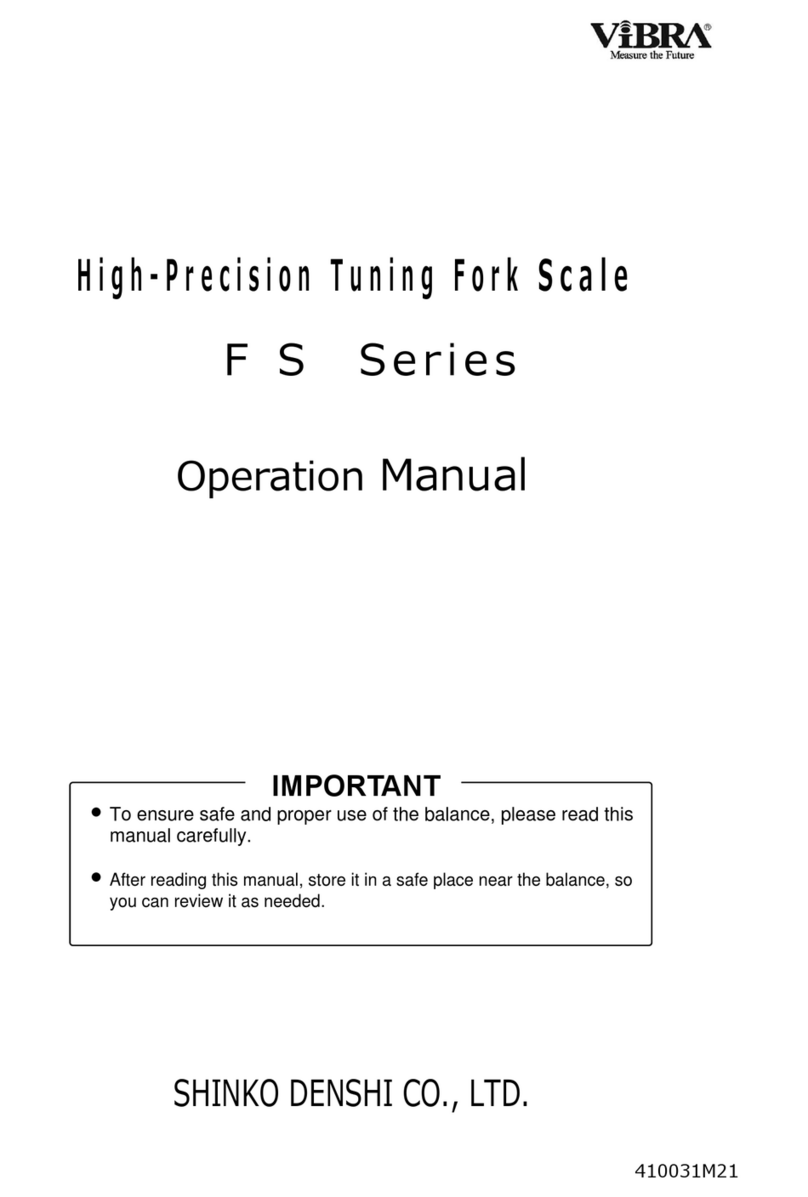
Shinko Denshi
Shinko Denshi FS623 User manual

Shinko Denshi
Shinko Denshi PF-R150 User manual
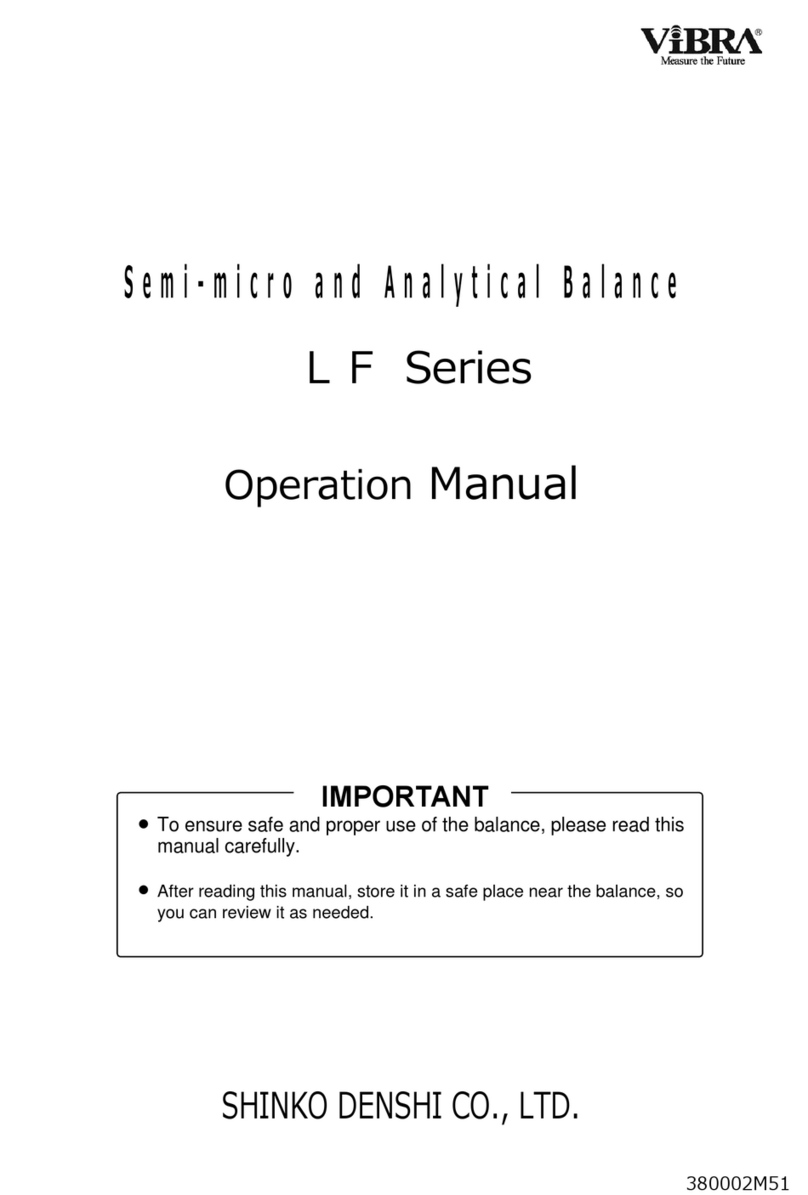
Shinko Denshi
Shinko Denshi LF124R User manual

Shinko Denshi
Shinko Denshi LN 423 User manual

Shinko Denshi
Shinko Denshi LN 223CE User manual

Shinko Denshi
Shinko Denshi AZ Series User manual

